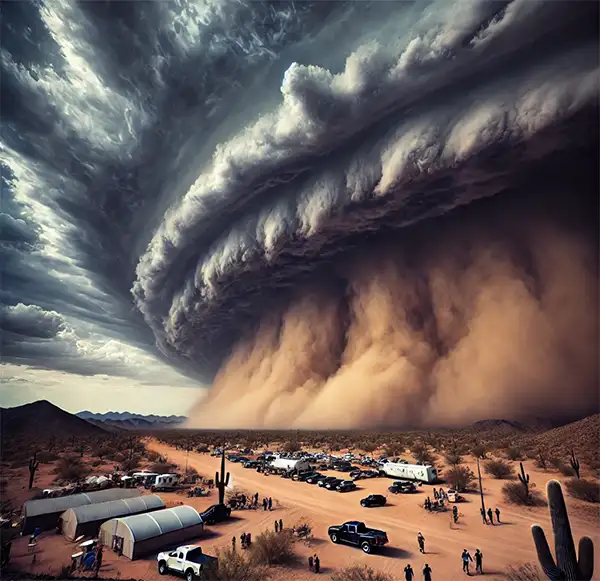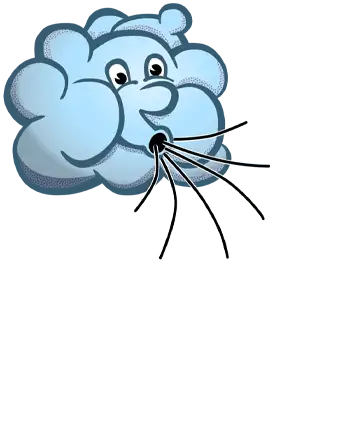Battling the Bluster
Every year on July 12th, countries rally to observe the International Day of Combating Sand and Dust Storms, a day dedicated to raising awareness about these gritty invaders that roll in uninvited, spreading sand, dust, and sometimes a little bit of chaos. Sand and dust storms can be awe-inspiring and downright surreal, transforming landscapes into scenes that could be straight from Mars. But behind their dramatic appearance lies a force capable of disrupting lives, damaging infrastructure, and sparking some serious sneezes. Let's delve into the science, the myths, and the quirky realities of these blustery bullies.
Origins of the International Day of Combating Sand and Dust Storms
The United Nations General Assembly established the International Day of Combating Sand and Dust Storms in 2023, marking July 12th as a day to focus on the challenges posed by these natural events. The day was created in response to growing global concern about the impact of sand and dust storms, especially in regions like the Middle East, North Africa, Central Asia, and other arid parts of the world that regularly experience these weather phenomena.
The initiative was driven by a coalition of countries frequently affected by sand and dust storms, including Iran, Iraq, and other Middle Eastern nations, which took the lead in raising awareness about the issue on an international scale. Their goal was to shed light on the severe health, environmental, and economic impacts of these storms, which are exacerbated by climate change, deforestation, and poor land management practices.
 By dedicating a day to combat sand and dust storms, the UN hopes to inspire international collaboration to find solutions. The focus is on encouraging sustainable land management, developing early warning systems, and promoting research into mitigating the effects of these storms. This day is a call to action, urging governments, scientists, and citizens alike to work together to protect vulnerable communities and preserve ecosystems impacted by sand and dust storms.
By dedicating a day to combat sand and dust storms, the UN hopes to inspire international collaboration to find solutions. The focus is on encouraging sustainable land management, developing early warning systems, and promoting research into mitigating the effects of these storms. This day is a call to action, urging governments, scientists, and citizens alike to work together to protect vulnerable communities and preserve ecosystems impacted by sand and dust storms.
What Exactly Causes Sand and Dust Storms?
Sand and dust storms, also known as “haboobs” (yes, you read that right), are massive gusts that lift sand and dust off the ground, sending it whirling through the air. They’re not just confined to deserts—though places like the Sahara and Middle East are hotspots. These storms need three things to get going: wind, dry conditions, and unfortunately, a bit of human “help.”
-
Wind Power: When winds hit a certain speed, they’re strong enough to pluck particles from the ground, giving them an unplanned (and unpaid) ticket to ride.
-
Dryness: Parched lands are storm-friendly grounds. Without moisture to anchor the sand, it’s like having a fine powder just waiting for a gust to carry it away.
-
Human “Assistance”: Deforestation, overgrazing, and poor land practices make sand and dust storms much worse. With vegetation gone, there’s nothing holding down the dirt, making it much easier for the wind to kick it up.
The Many Hazards of Sand and Dust Storms
These dusty delinquents are more than just an inconvenience. Here’s a look at the mischief they cause:
-
Health Woes: Breathing in fine particles (PM10 and PM2.5) can irritate the lungs, trigger asthma, and in some cases, even lead to long-term issues. If you’ve ever choked on a face full of dust, you know it’s not exactly a spa treatment.
-
Visibility Zero: Driving or piloting through a dust storm? Imagine navigating a highway blindfolded. These storms drop visibility, making road accidents and flight delays all too common.
-
Infrastructure Wreckage: Sand has an annoying habit of getting into the cracks of everything—from car engines to air conditioners. In heavy storms, buildings can look sand-blasted, machinery grinds to a halt, and the repair bill skyrockets.
-
Environmental Impact: Think of dust storms as tiny thieves, stealing the top layer of fertile soil from farmlands. This not only harms agriculture but also blankets plants and habitats in sand, disrupting wildlife and ecosystems.
Coping with the Sand Invasion
Although we can't tell sand and dust storms to go kick up dirt somewhere else, we have a few clever strategies to deal with their impact:
-
Green the Land: Trees, shrubs, and grasses are nature’s armor. Planting vegetation helps anchor soil and tame the wild, blowing dust.
-
Water Spritz: Spraying water over dust-prone areas (a tactic often seen on construction sites) keeps particles grounded. After all, dust can’t fly when it’s soggy.
-
Storm-Proof Buildings: Ever thought of installing sand-resistant windows and doors? Certain building designs can help block dust from sneaking in, sparing homeowners from having to sweep sand out of their living rooms.
-
Warning Systems: Tech has come to the rescue with early warning systems that help communities prepare. These systems use weather data to warn when sandstorms are en route, giving you just enough time to batten down the hatches.
Fascinating Facts about Sand and Dust Storms
-
Cross-Continental Carriers: Ever wondered if dust could take a vacation? Dust from the Sahara often drifts across the Atlantic, fertilizing the Amazon Rainforest. Yes, the very dust that gives the desert its iconic look helps feed a jungle thousands of miles away.
-
Mars has it Worse: Mars experiences dust storms that can cover the entire planet for months. It's essentially a never-ending sandstorm season on the Red Planet, making our earthbound dust devils look tame.
-
A Red Down Under: In 2009, Australia had its own “dust-pocalypse” when a storm covered the landscape in a surreal, red-tinted haze. It was like the outback got dipped in paprika, and locals captured some jaw-dropping photos that could rival any sci-fi flick.
Finding the Humor in Haboobs
Sandstorms have a strange way of sneaking humor into their swirling chaos. There's nothing like seeing people try to shield their faces with newspapers or sprint to their cars when a wall of dust looms. And who can forget the never-ending sweep-a-thon that follows as sand seems to materialize in every corner? If you're lucky, you might even get one of those eerie, Instagram-worthy “orange sky” moments that look straight out of a post-apocalyptic movie.
So, as International Day of Combating Sand and Dust Storms reminds us, while sandstorms might have a touch of the spectacular, they bring plenty of real challenges. Next time you spot a sandy cloud rolling in, shut the windows, cover your face, and maybe take a photo to capture the drama. After all, these sandy showdowns make for a spectacular (and a little gritty) sight. Stay safe, and keep the dust out of your lungs and life!
Please Share our Content






 By dedicating a day to combat sand and dust storms, the UN hopes to inspire international collaboration to find solutions. The focus is on encouraging sustainable land management, developing early warning systems, and promoting research into mitigating the effects of these storms. This day is a call to action, urging governments, scientists, and citizens alike to work together to protect vulnerable communities and preserve ecosystems impacted by sand and dust storms.
By dedicating a day to combat sand and dust storms, the UN hopes to inspire international collaboration to find solutions. The focus is on encouraging sustainable land management, developing early warning systems, and promoting research into mitigating the effects of these storms. This day is a call to action, urging governments, scientists, and citizens alike to work together to protect vulnerable communities and preserve ecosystems impacted by sand and dust storms.








 "Sláinte!" is a traditional Irish expression used as a toast, equivalent to "Cheers!" in English.
"Sláinte!" is a traditional Irish expression used as a toast, equivalent to "Cheers!" in English.